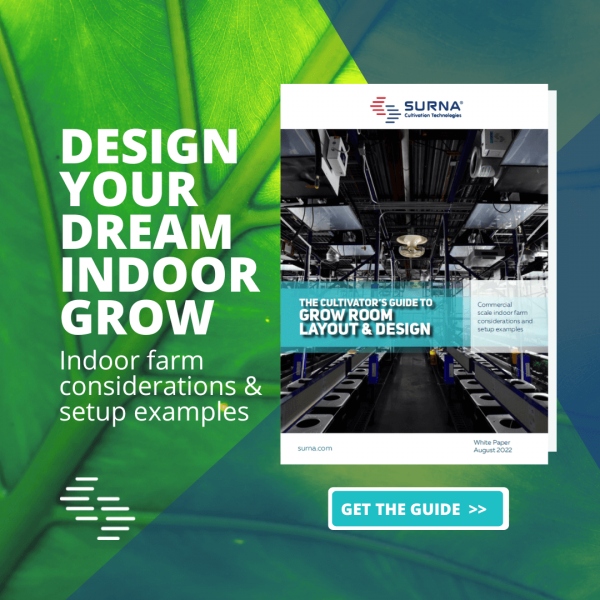Last week, the Surna team traveled to Los Angeles to attend the Cannabis World Congress & Business Exposition. This was our first year exhibiting at this show and we met a lot of great people and attended some interesting talks regarding hot topics in the industry.
Because the show took place in LA, California’s upcoming adult-use market was a great topic of discussion. We were fortunate to meet and talk with many cultivators who are beginning the process of becoming licensed producers. Regulations are beginning to take shape in California but there are still questions about what those will entail. For California specifically, the topics of biosecurity and the energy intensive nature of cannabis cultivation are top of mind.
California has traditionally regulated industry quite closely and so it is likely that the final regulations will require strict testing on all cannabis products. Traces of certain chemicals, like pesticides and fungicides, as well as mold and fungus will cause crops to fail testing, forcing cultivators to destroy their product and costing them profits. Many of those setting up new facilities are already thinking about how to best handle this potential roadblock and so many of our conversations in LA centered around our biosecurity offering because of the comprehensive nature of it. Our solution is tailored to the specific facility we are working with so we begin the process by assessing risks for the region and for the facility environment. Once areas of improvement are identified, we then incorporate equipment and protocols to prevent and/or treat biosecurity issues. Our depth of understanding made for some great conversations with people who are thinking of ways to ensure they don’t fail testing.
The other hot topic we found ourselves talking about was how to create a more efficient indoor facility. Many of those we spoke with were planning on building in southern California where the only real choice for cannabis cultivation is indoors. This creates a concern around energy usage as California already struggles to meet the electrical needs of its 40 million citizens. In fact, drafted legislation currently mandates that indoor cultivation facilities receive 42% of their power from renewables. So, as one can imagine, energy efficiency is a serious concern for those interested in setting up shop. At Surna, we’ve been designing efficient systems for a decade, with over 700 projects completed. Our technology uses significantly less power than a traditional HVAC system. Inherent in the design of our system is the option to use less equipment to create the same output, which means less renewables needed and minimized operating costs—all of which California growers can appreciate.
Energy efficiency is such a staple of our business that our own co-founder and Senior Technical Advisor, Brandy Keen, was invited to speak about it at CWCBE. Ultimately, a high return on investment comes from growing the healthiest plants at the smallest cost, so efficiency should always be top of mind in a cultivation facility. Because Surna has been in this industry for over a decade, we’re experts in the various ways facilities can achieve this. Brandy explained the top 5 things to consider when designing an energy efficient facility. First, cultivators should consider rebates when choosing equipment. Many utility companies offer these for facilities that utilize energy efficient technologies, like the Surna system. The second thing to consider is what type of climate control technology to employ as it is estimated that as much as 51% of facility electrical infrastructure is dedicated to it. Depending on a cultivators’ goals, there are multiple options for climate systems, ranging from less efficient to most efficient. At Surna, we are the experts on climate control and help our clients choose the best system for their facility and operating cost targets. The third thing cultivators should consider is how to optimize their process so that they reduce power consumption during peak hours when energy is more expensive. Running a facility on a flip schedule is a great way to do this because it reduces peak energy levels and our Surna chilled water system allows us to do this easily and reduce up-front capital expenses at the same time. The fourth thing to consider is water usage. For many in California in particular, obtaining enough water for cultivation will be a hurdle. Fortunately, controlled environments like a Surna system make condensate reclamation easy, offering cultivators “free” water over and over and reducing the burden on the city or county to provide enough water. Finally, Brandy explained how choosing the correct lighting can help efficiency. While total consumption is key, cultivators should also consider umols produced per watt as this is the true measurement of efficiency. Brandy explained that, at this point, cultivators should only use double-ended, Plasma and LEDs that are designed in the best spectrum for the cannabis plant.
Overall, CWCBE was a great experience. As always, it was wonderful to meet many of you and learn about your future endeavors. We love being a part of this growing industry and sharing our expertise with dreamers like us.

